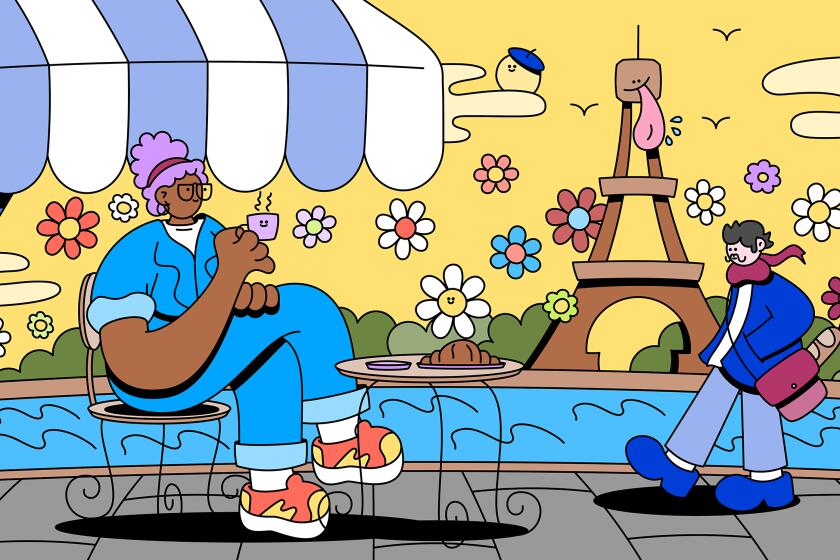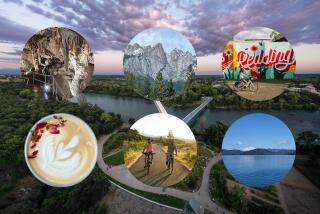How to visit Sedona without being a jerk
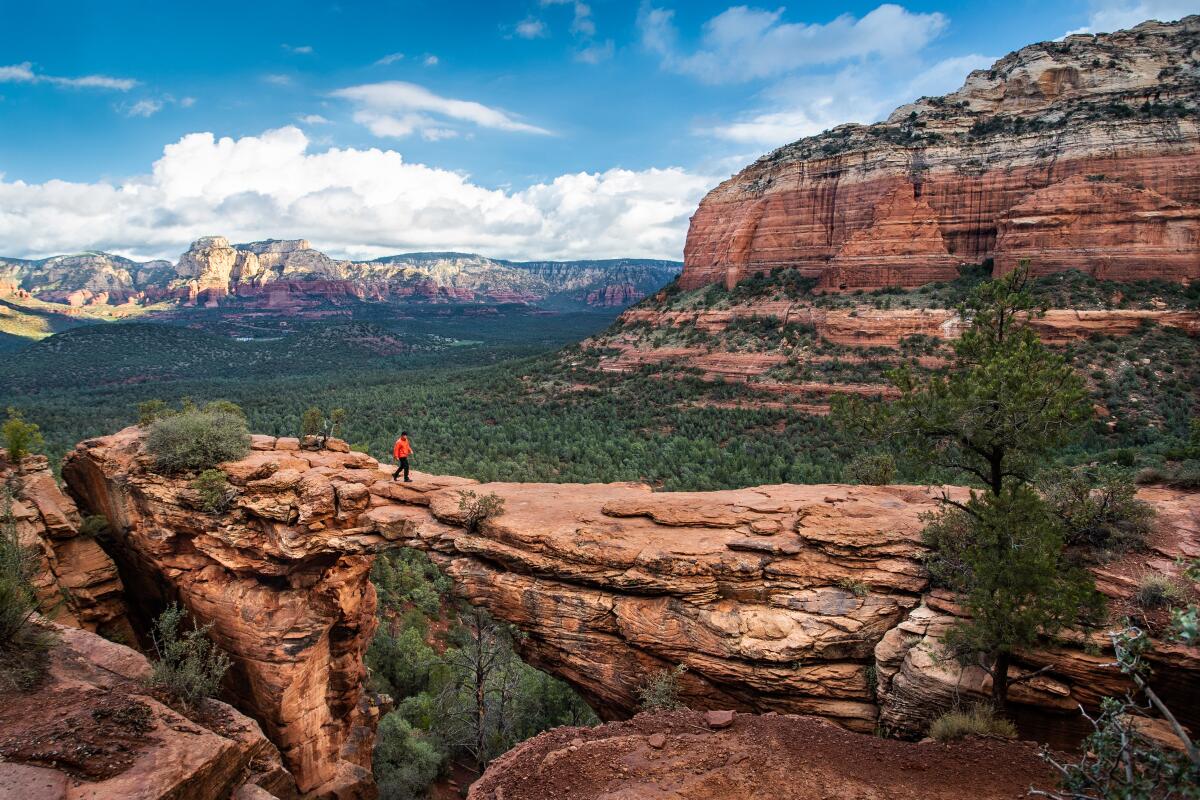
- Share via
With its towering red rock formations, spiritual vortices and hundreds of miles of hiking trails, Sedona, Ariz., has long beckoned weekend travelers from L.A. And we keep answering the call. Californians make up the highest percentage of Sedona visitors, after Arizona residents. All over social media, you’ll find influencers standing in rock tunnels and gazing out into the vast Southwest desert terrain above captions like, “Pure magic.”
But many Sedona residents believe tourists are loving their town to death.
“Go home tourists!” reads the headline of a forum post by one Sedona resident, who cites bad behavior such as littering, driving ATVs on hiking trails and parking illegally to take “stupid family pics” as reasons for the frustration.
Around 3 million tourists visit Sedona each year — that’s 8,219 visitors a day who use the two main roads, State Routes 89A and 179, to traverse the town of about 9,700 residents. The pandemic unleashed more people into the northern Arizona haven, with 3.7 million visiting in 2021, according to Michelle Conway, president of the Sedona Chamber of Commerce & Tourism Bureau.
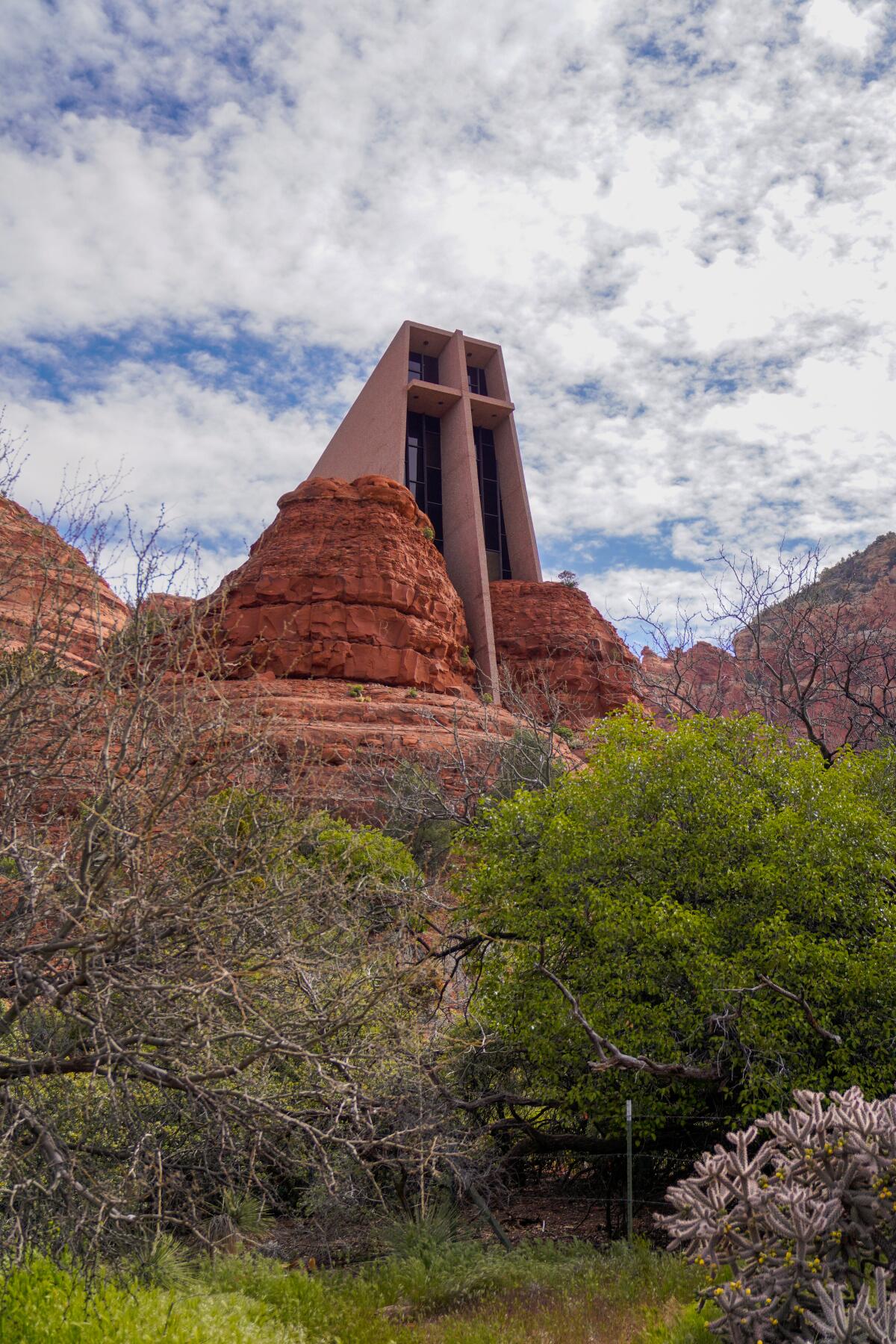
“Sedona was a safe, outdoor-oriented destination during the pandemic, and we got pummeled with the amount of visitation,” Conway said.
But because it’s a town heavily fueled by tourism, Conway added, “There’s no way to pull the drawbridge up.” So with an initiative they’re calling the Sedona Sustainable Tourism Plan, the chamber aims to educate visitors about how to be “sensitive guests.” They’re pointing travelers to the Sedona Cares Pledge (which includes declarations such as “I’ll make my own memories, but not my own trails” and “If I can’t find a parking spot, I will not invent my own”), along with Sedona’s seven principles of Leave No Trace, reminding people to respect wildlife, leave what they find and pack out their trash, among other things.
“We now say goodbye to the idea of our visitor as a mass consumer seeking a few snapshots and experiencing Sedona mostly through a windshield,” the chamber’s website states. It continues: “We also seek a new bond with travelers who share our love and respect for this Most Beautiful Place on Earth.”
Pro tips from Times travel journalist Christopher Reynolds on visiting national parks, saving on LAX parking, checking a hotel’s fine print and more.
In other words, if you’re a day tripper who’s in it for a few selfies, stay home.
But if you’re looking to immerse yourself in Sedona while respecting its residents and environment, then it’s worth considering a trip to the beloved Red Rocks Country. Just read these dos and don’ts first.
Do go during off-seasons
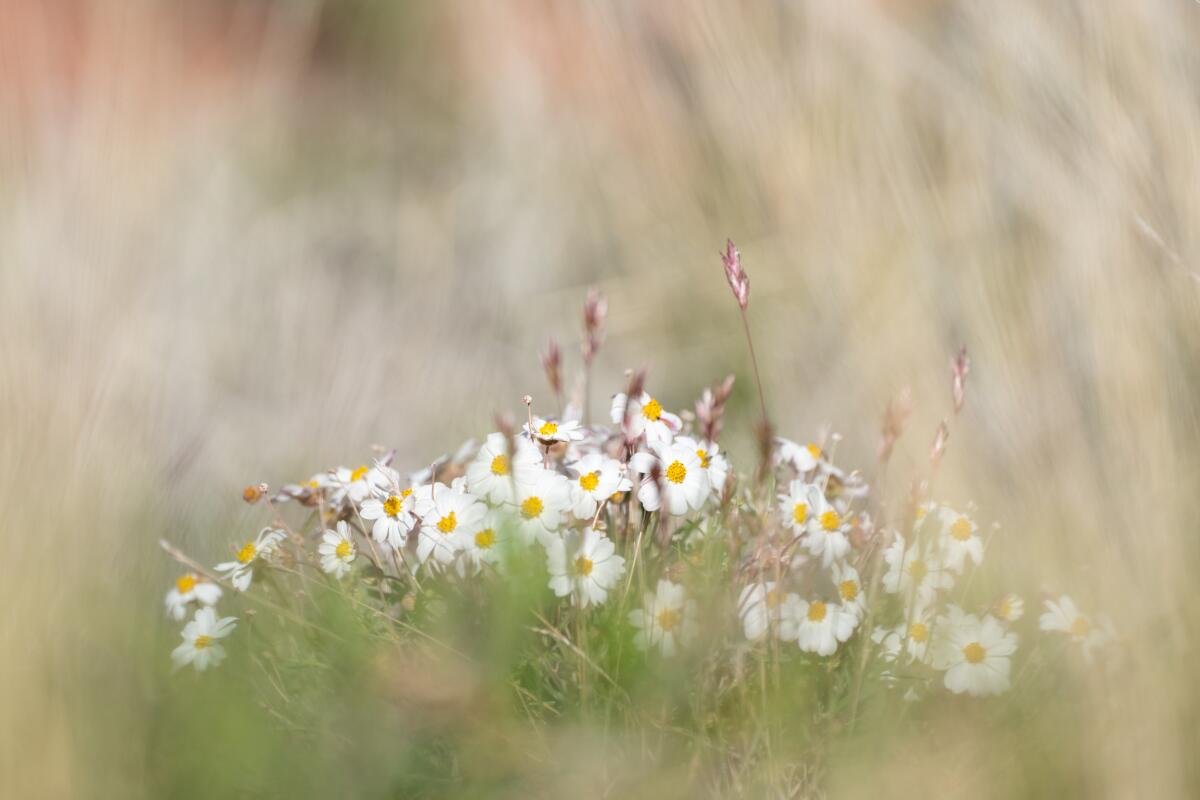
Plan your Sedona getaway strategically. “In the summer, July and August are quite hot, but they’re less busy,” said Al Comello, a Sedona marketing professional. “Average daily temperatures stay in the 90s, and March to May seem to be perennially the most popular times to visit. In the winter, we do get snow, so summer and winter are also ideal times to visit without crowds.”
At SedonaTraffic.com, you can see the traffic in real time and plan your trip based on reality, he said.
“We would all be happier if tourism was more moderate and consistent year-round,” said Rebecca Schemmer, co-owner of wine and craft beer bar Vino di Sedona.
Don’t swarm the most popular spots
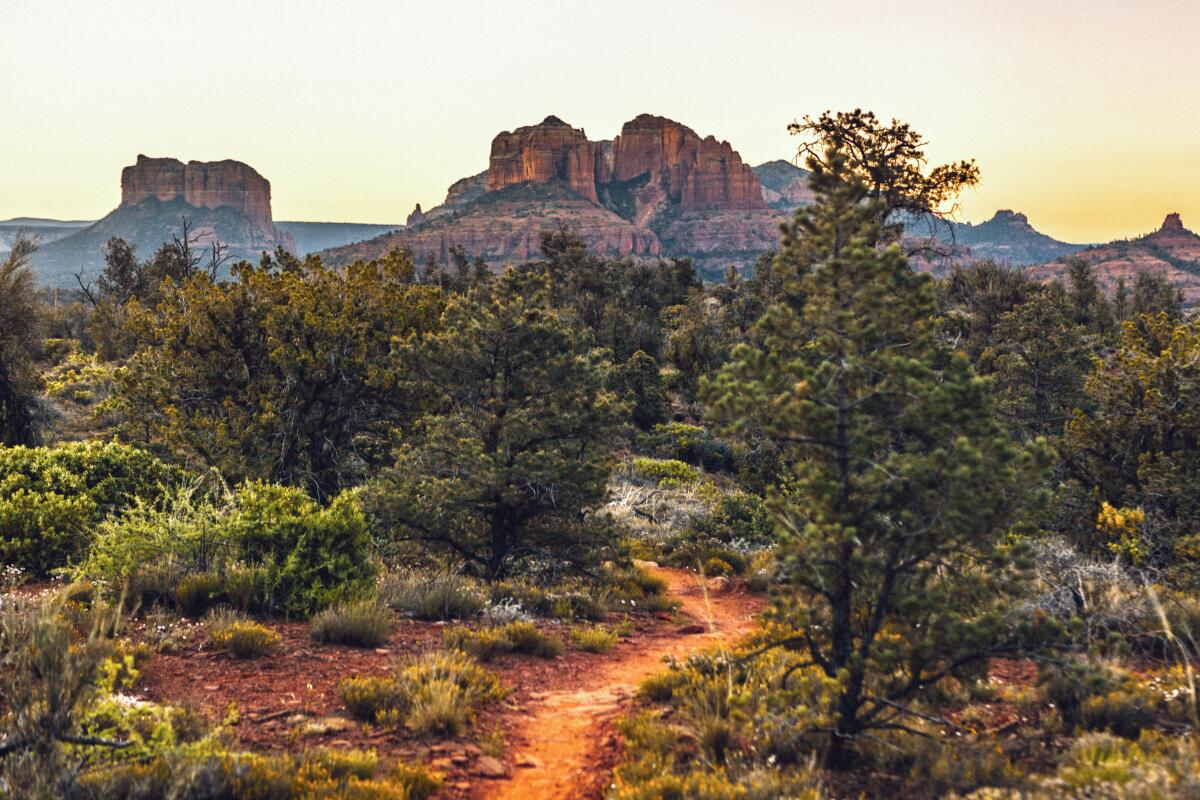
Sure, you’ll probably want to see Sedona’s most recognized landmarks, including the Chapel of the Holy Cross, Devil’s Bridge Trail and the four most recognized spiritual vortexes — Bell Rock, Cathedral Rock, Airport Mesa and Boynton Canyon. But try a couple less crowded activities as well: Test your mountain biking skills at the Sedona Bike Park or watch birds take off at the Sedona Wetlands Preserve.
Also, with more than 400 miles of trails, most in the Coconino National Forest, there are plenty of opportunities for hiking. Local resident and short-term rental owner Cat Sullivan said the Dawa and Cockscomb trails, on Sedona’s northern edge near Dry Creek, “don’t get overrun with people.” At sustainably farmed Alcantara Vineyard in nearby Camp Verde, server Julie Camponeschi said the West Fork of Oak Creek Canyon is a “beautiful, beautiful hike,” but it’s nearly impossible to get a parking spot on weekends. So go on a weekday.
Check the schedule for the free Sedona Shuttle to spare any parking angst. My friend and I found a spot at the Thunder Mountain trailhead and enjoyed a just-right, easy-to-moderate hike on Chimney Rock Loop Trail, one of Sedona’s lesser-known spots.
Do pick up your trash (and really, any trash)
“People are treating the world, and Sedona, like it’s their garbage can,” said Mark Troska of nearby Cottonwood. Residents report litter being left in parking lots, on trails and in the water.
“It makes it hard for the locals, who rarely utilize anything here anymore,” said Jillian Bradshaw, whose father, John Bradshaw, is an owner of Alcantara Vineyard & Winery, where she works.
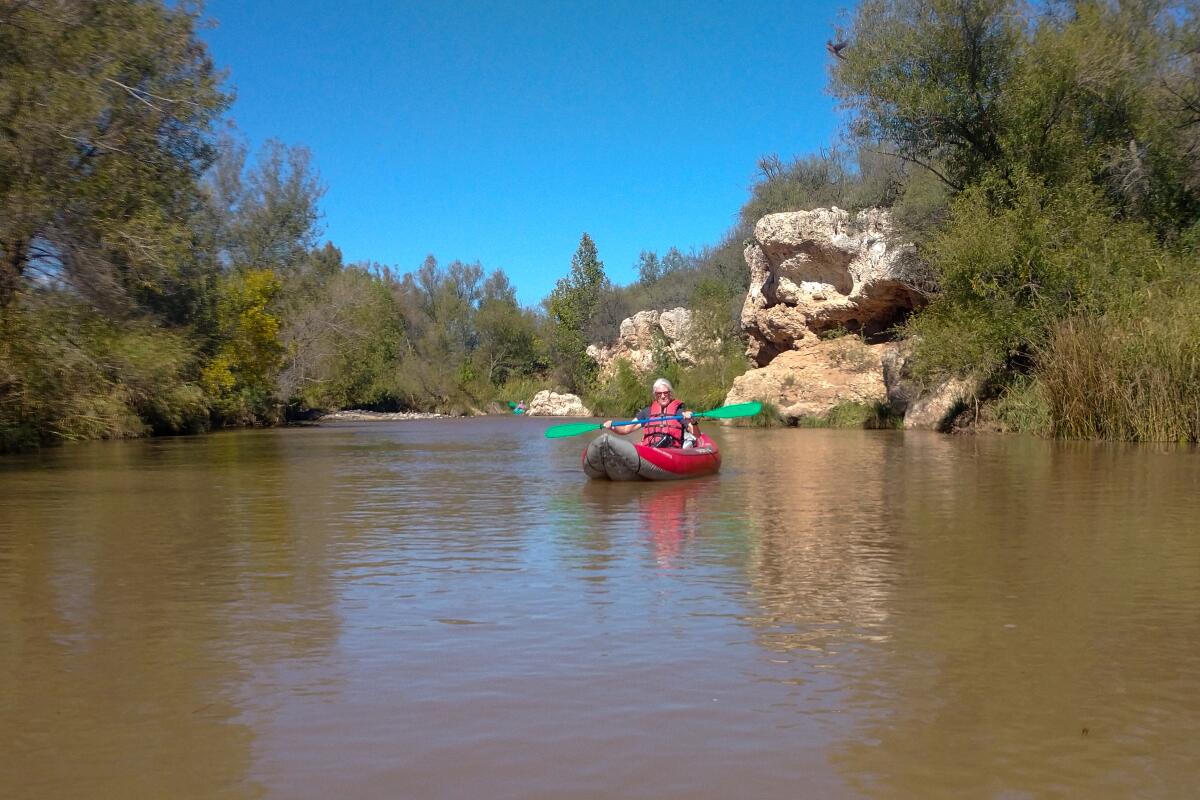
She hasn’t been to the famous Slide Rock State Park in probably two decades because of crowds and some tourists being so disrespectful, like “wild animals, trashing everything.”
A good rule of thumb in Sedona (or anywhere in nature) is to leave it better than you found it. Doing my part, while kayaking with Verde Adventures, I deftly maneuvered my kayak to pull plastic pipe, a green beer bottle and a plastic bottle full of (gag) urine out of the Verde. The ride was perfect, with the gentlest rapids and the only soundtrack coming from the water and birds around me.
Don’t go off-roading recklessly
Observers document reckless driving and unrelenting noise, especially along Forest Road 525 and Boynton Pass Road, about 20 minutes out of town. “If you drive out there, for 250 feet on either side, trees are dead because of dust that falls on them,” said Sedona Mayor Scott Jablow. “Photosynthesis can’t occur, and we don’t get a lot of rain, so they die.”
Environmental advocate DeAnna Bindley lives there and cites off-highway vehicles, Jeep, Hummer and dirt bike rentals as frequent travelers. One day she said she counted 320 trips on the road.
“Public land is being tortured and destroyed so people can do these things,” Bindley said.
But Brian Carstens, the general manager of Sedona ATV and Buggy Rental, said he “can’t police everybody every day.” So his company now shows vehicle renters a short video from the Arizona Game and Fish Department, and that has reduced bad behavior and damages by 80%. A few basic guidelines: Keep your vehicle quiet (don’t tamper with the manufacturer’s exhaust system), always yield the right-of-way to hikers and bike riders, and don’t ride in closed areas.
“Rappers, basketball and football players come from Austria, the Netherlands, and Switzerland to go off-roading, mostly 35- to 60-year-old males,” Carstens said. “Lots of people say this is the best part of their vacation.”
Do consider locally owned hotels over Airbnbs
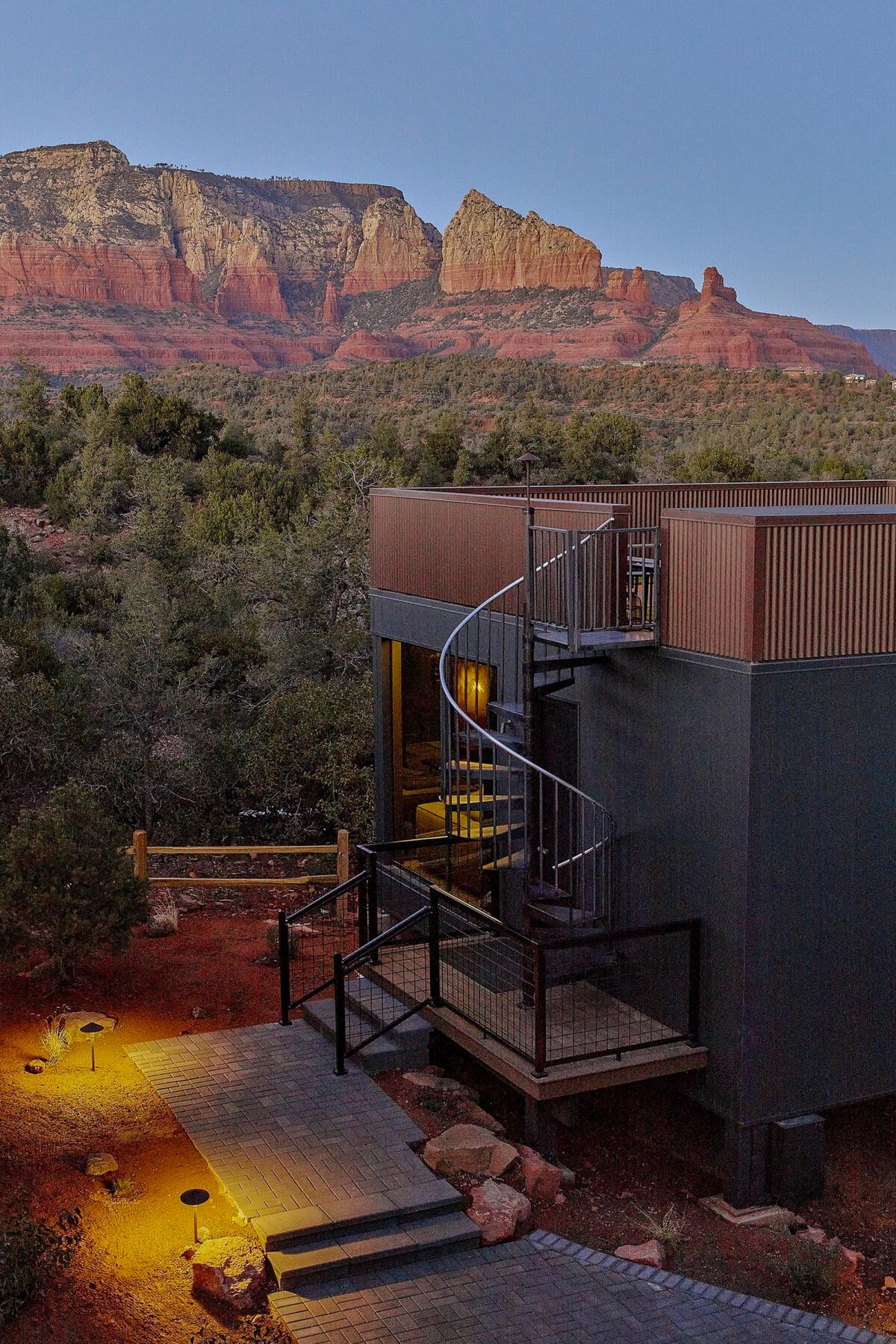
The number of short-term rental properties in the Sedona area has made it unaffordable for many longtime residents, including local workers. (Last year, the city launched a pilot program that would pay property owners up to $10,000 to pull their listings from Airbnb and VRBO and sign leases with locals instead.)
Hotels are typically a more sustainable option. And there are plenty to choose from. Elegant and modernistic, the adults-only Ambiente “landscape hotel” opened this month and was designed to have minimal impact on the natural environment. While there, gaze at 360-degree red rock views of landmarks such as Ship Rock and Coffee Pot Rock.
“Think ‘Sedona on IMAX,’” said co-owner Jennifer May. “We save every tree and every piece of greenery we possibly can, to leave this natural forest as natural as possible.”
Also in the luxury category, L’Auberge de Sedona on Oak Creek, with cottages, a lodge and super-attentive service, is an exquisite homage to nature with well-cared-for resort cats on-site. At the eclectic A Sunset Chateau Boutique B&B, you’ll find lush gardens and outdoor art.
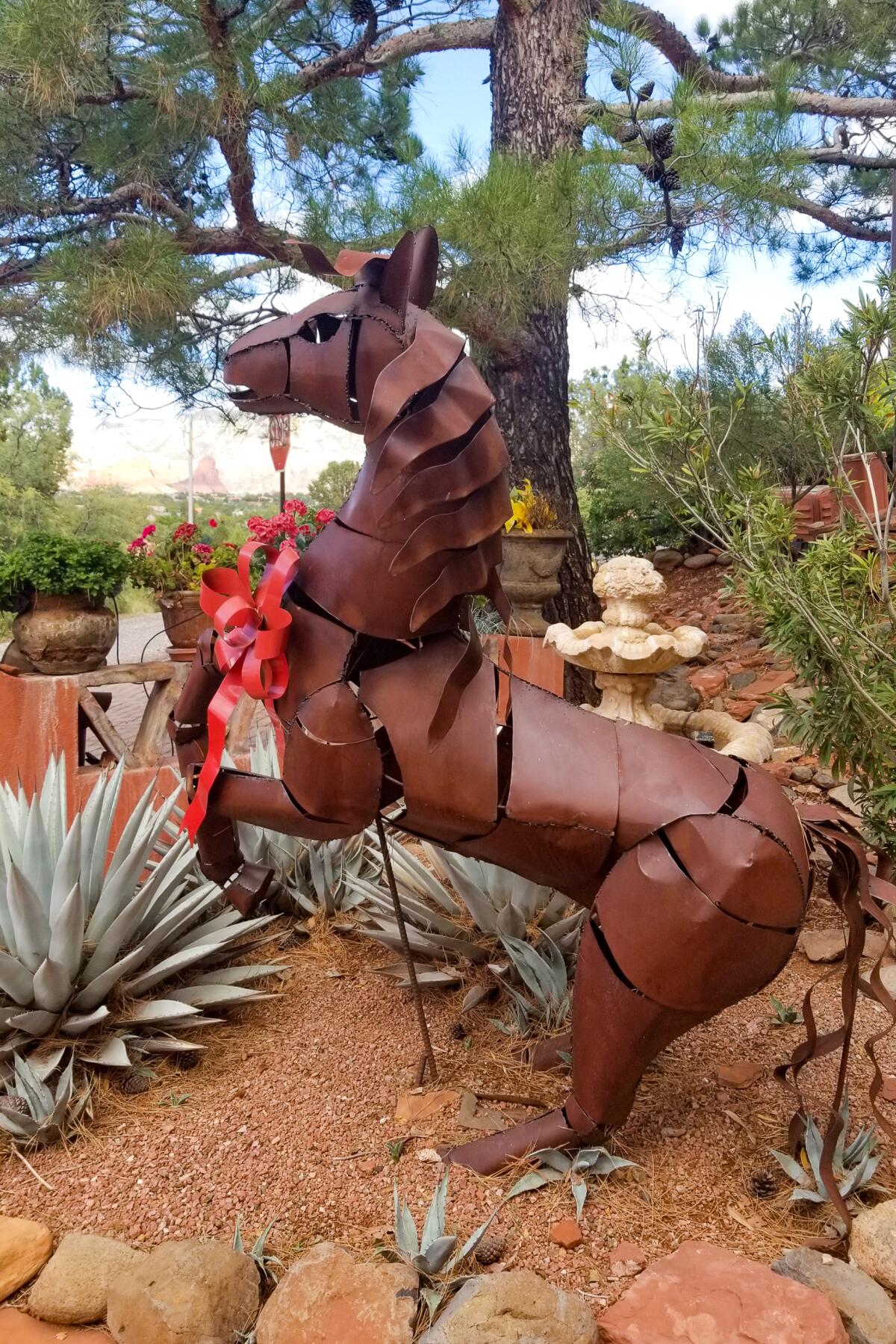
Eight miles out of town, the spectacular Enchantment Resort puts you smack in the middle of a red rocks experience, replete with wildlife, on 70 acres in Boynton Canyon. Hiking and mountain biking aficionados gravitate to the resort’s architecturally chic Trail House, an “epicenter for outdoor adventures,” with an expansive pool, tennis, pickleball, stargazing, a labyrinth and much more.
“This is the mecca for mountain biking in the United States,” said biking guide Steve Tedrick, a.k.a., “Shaggy,” who embodies Sedona’s zen-like vibe. “I teach sustainable progression on the mountain bike, and it’s all about the balance and the flow, surfing the geologic wave, if you will.” Surfing that wave down steep hills, over rocks and around sharp corners definitely tests balance and flow — or lack thereof.
According to Brett Briseno, Enchantment Resort and Mii amo destination spa director of sales and marketing, a portion of the tour fee for all hike and bike tours goes directly to the Boynton Canyon Preservation Fund, and resort employees volunteer twice a year to clean up and maintain the trail system. Mii amo also reopened this month after a $40 million renovation and expansion.
For an intimate, welcoming and pet-friendly boutique property, stay at El Portal Sedona Hotel. It’s next to the Tlaquepaque Arts & Shopping Village, headquarters for gifted local artisans. Or choose the rustic and moderately priced Sky Ranch Lodge, which has rooms 500 feet above the city, spectacular red rock rim views, botanical gardens and tranquil ponds right on site.
Don’t stick to chain restaurants
When you get hungry, Sedona has more than 50 restaurants to choose from. The owner of five of them is acclaimed chef and restaurateur Lisa Dahl — a.k.a. the culinary queen of Sedona — who estimates that her dining brands Mariposa, Cucina Rustica, Dahl and Di Luca Ristorante Italiano, Pisa Lisa and Butterfly Burger collectively feed up to 500,000 people per year.
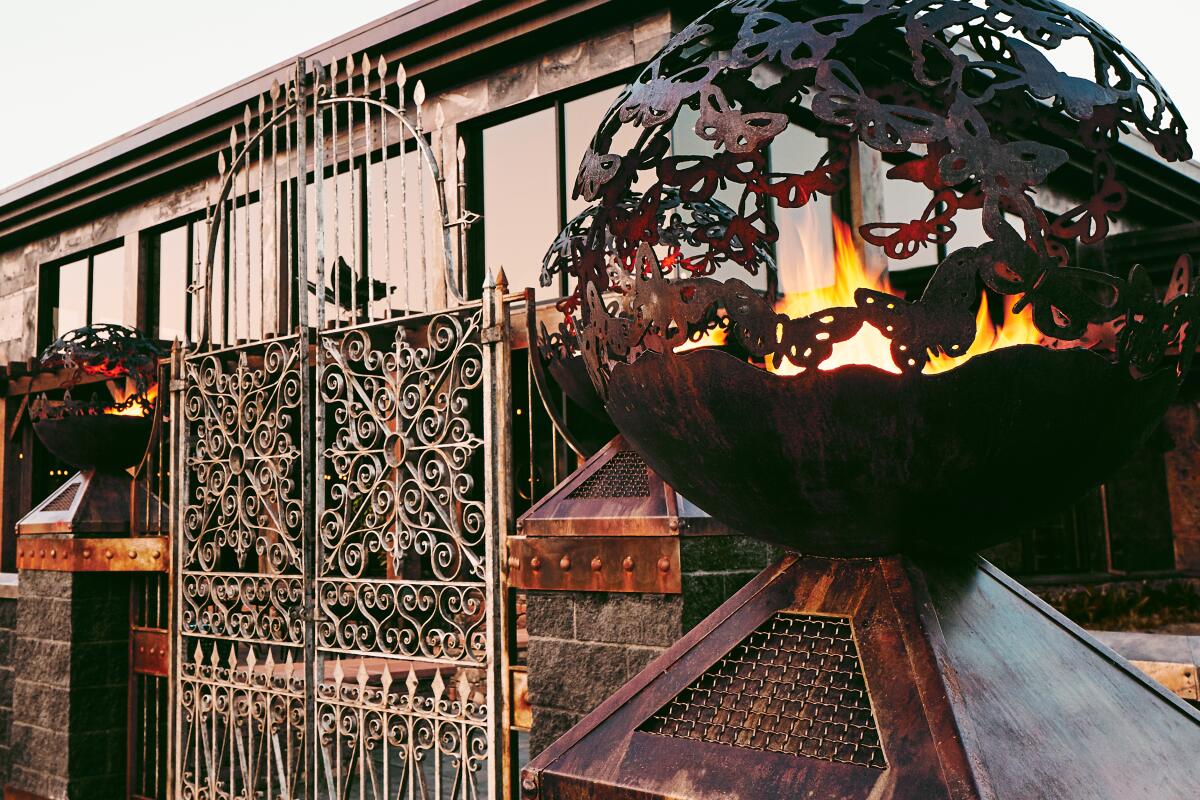
“Without tourism, there will be no sustainable Sedona,” said Dahl, but she hopes that out-of-town guests will “honor the sacredness and beauty that many locals and tourists want to preserve for many generations to come in perpetuity.” My dinner at Mariposa included tantalizing appetizers of portobello three-cheese mushroom empanadas, yucca fries and cauliflower curry bisque. Hint: Make a reservation several months ahead during high seasons.
To go more casual and rustic, opt for the historic Up the Creek on Oak Creek, in Cornville. Try the grilled artichoke and Louisiana gumbo and a wine from a fabulous cellar, accompanied by piano serenades from sommelier, chef and co-owner Jim O’Meally. Another must: Drive two minutes to Page Springs Vineyard, which is reminiscent of a Napa Valley vineyard. I loved the hearty Vino Barrio Rojo. Or go casual at Vino de Sedona, selling 900 globally and locally sourced wines.
Do respect the sacred land
Native Americans discovered Sedona at least 3,000 years before the first white person, Jim Thompson, arrived in 1878, according to Mike Haboush, docent at the Sedona Heritage Museum. “The Sinagua — meaning ‘without water’ — were here long before the Hopi, Yavapai and Apache,” he said.
An insider’s travel guide that takes you beyond the mouse ears, selfie spots and Golden Gate Bridge.
Visit ruins and cliff dwellings at Montezuma Castle National Monument, Palatki Heritage Site and its sister site, Honanki, or a small hilltop pueblo at Tuzigoot National Monument.
“Don’t confuse vortex sites with sacred lands,” Haboush said. “During the early ’70s and the New Age movement, vortexes became popular places to meditate and feel concentrated energy from the earth. The Native Americans also believed there were ‘curtains of energy’ in the area.”
He adds: Please don’t sit and meditate in the middle of a hiking trail or build stacked rock cairns to show “you were there.”
“All of the Verde Valley is considered sacred land,” said Irina Litvin of One Tribe Tours. The company creates custom itineraries for guests who want to get the most benefit from visiting a vortex area, which may include guided meditations or yoga.

Perhaps the easiest way to take better care of Sedona is to shed the tourist mindset — there are no medals for checking off every spot in your guidebook as quickly as possible.
“Sedona is not about seeing everything,” said Steve Segner, president of the Sedona Lodging Council and co-owner of El Portal Sedona Hotel. “It’s about slowing down a little bit. Walk any trail, take a deep breath and just take nature in.”
In the end, if people respect this magical place, they’ll have the same wonders to look forward to when they return.
More to Read
Sign up for The Wild
We’ll help you find the best places to hike, bike and run, as well as the perfect silent spots for meditation and yoga.
You may occasionally receive promotional content from the Los Angeles Times.
